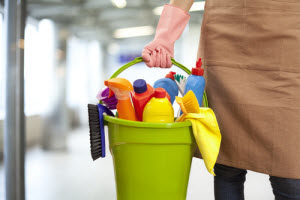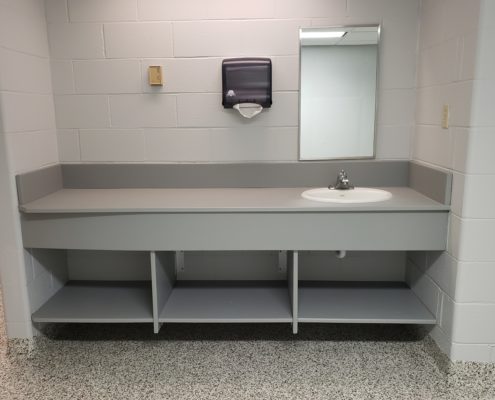To a school facility manager, the end of summer is a busy time, especially in the current environment. While you may have kept up with some routine maintenance and cleaning throughout the off-season, now it’s time to really get started on preparing the building for the upcoming school year. This means getting a back-to-school cleaning plan and checklist together to make sure that you cover all your bases so your school building can be ready to start the school year off on the right foot.
Clean Those Hallways
 It’s important to give your hallways a thorough cleaning before the school year begins. Most germs and bacteria are picked up through foot traffic, and more often than not, those germs end up in the hallways. Utilizing a strong disinfectant cleaner can help combat the spread of germs. However, there are green cleaning products on the market that can help you achieve germ removal and still keep harmful chemicals from contaminating the air.
It’s important to give your hallways a thorough cleaning before the school year begins. Most germs and bacteria are picked up through foot traffic, and more often than not, those germs end up in the hallways. Utilizing a strong disinfectant cleaner can help combat the spread of germs. However, there are green cleaning products on the market that can help you achieve germ removal and still keep harmful chemicals from contaminating the air.
Focus Your Efforts in the Restroom/Locker Rooms
School restrooms and locker rooms are a breeding ground for bacteria, germs, and, of course, mold. While a thorough cleaning can help reduce the growth and spread of mold, it may already be too late. The constant presence of moisture can actually cause mold to sprout inside your partitions. If this is the case, you’ll need to replace them. But why not replace them with a material that can resist mold growth, and is naturally germ resistant*, such as HDPE (high-density polyethylene)?
Test Your Water & Air Quality
 Be sure to check your air and water quality to see if it’s up to code. Find a water tester in the area to help you conduct these routine tests so you can see where the quality lies. If the result isn’t as high as you’d hoped, consider replacing the filtration system. When it comes to air, there are several ways that you can do your part increase the quality. Consider getting indoor plants, utilize HDPE building materials, and have your HVAC system checked for any issues.
Be sure to check your air and water quality to see if it’s up to code. Find a water tester in the area to help you conduct these routine tests so you can see where the quality lies. If the result isn’t as high as you’d hoped, consider replacing the filtration system. When it comes to air, there are several ways that you can do your part increase the quality. Consider getting indoor plants, utilize HDPE building materials, and have your HVAC system checked for any issues.
Clean/Replace Lockers
You may not realize this, but lockers are a hotbed for germs. When the light catches them just right, you can see the assortment of finger prints, grease, and smudges that have built up over time. You can utilize cleaning products, but if there’s any rust or exterior damage, you may want to consider replacing them. Luckily, HDPE plastic lockers don’t rust, they aren’t easily damaged, and they’re resistant to graffiti, helping you maintain your facility without having to paint over them. And just like HDPE restroom partitions, HDPE lockers are naturally germ resistant*! Because of this, HDPE lockers can also help improve the school’s air quality. This material is also low maintenance, which helps you save time and money on your school cleaning checklist!
Was this back-to-school cleaning plan and checklist helpful in showing you the many ways that you can help get your school ready for the sudden influx of students? Do you want to find ways to make your school a safer and more sustainable environment for the students? Check out this eBook, Safe School Design: How Architecture Plays a Role in Creating Safe & Secure Educational Spaces, from your friends at Scranton Products.



